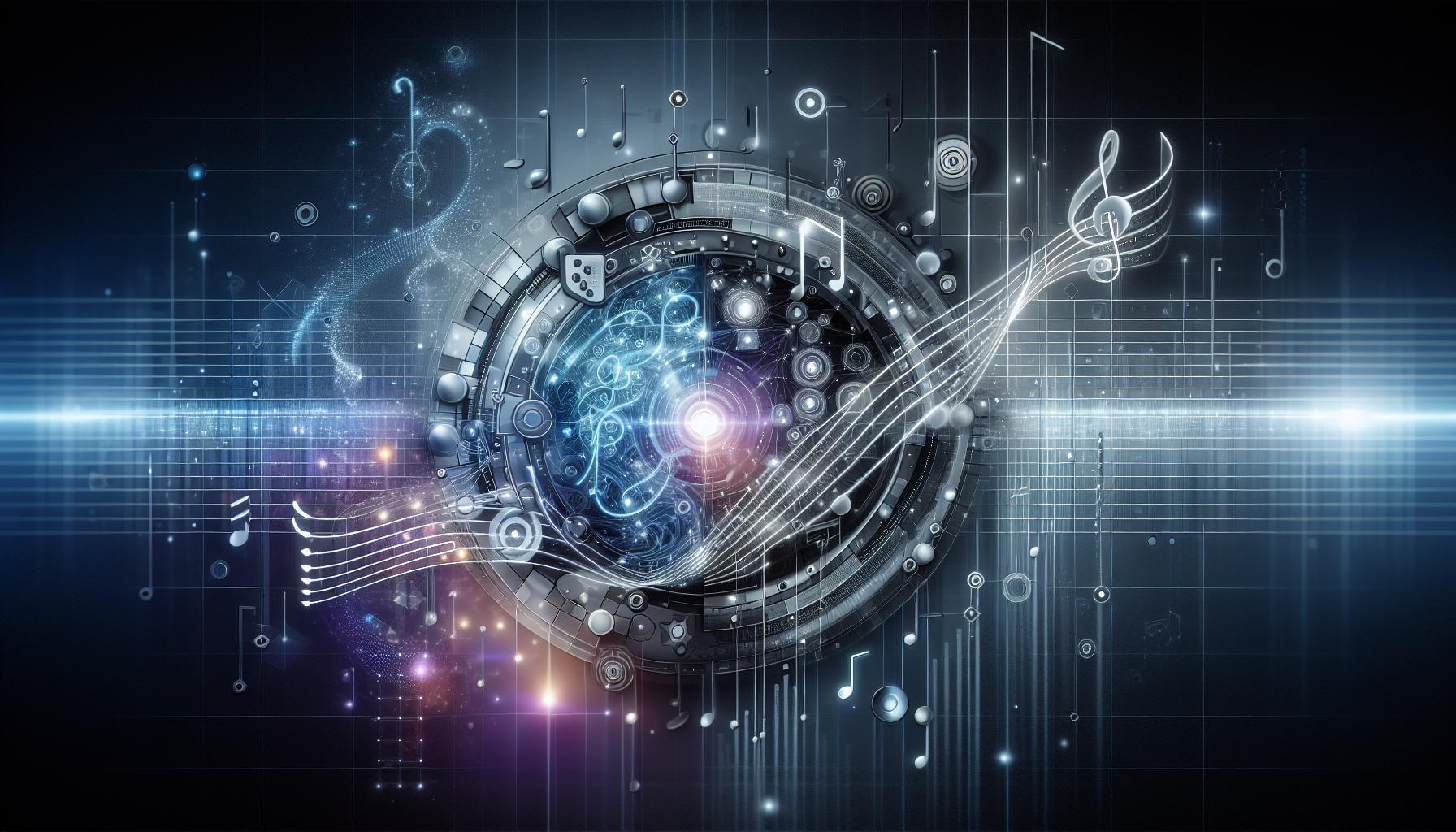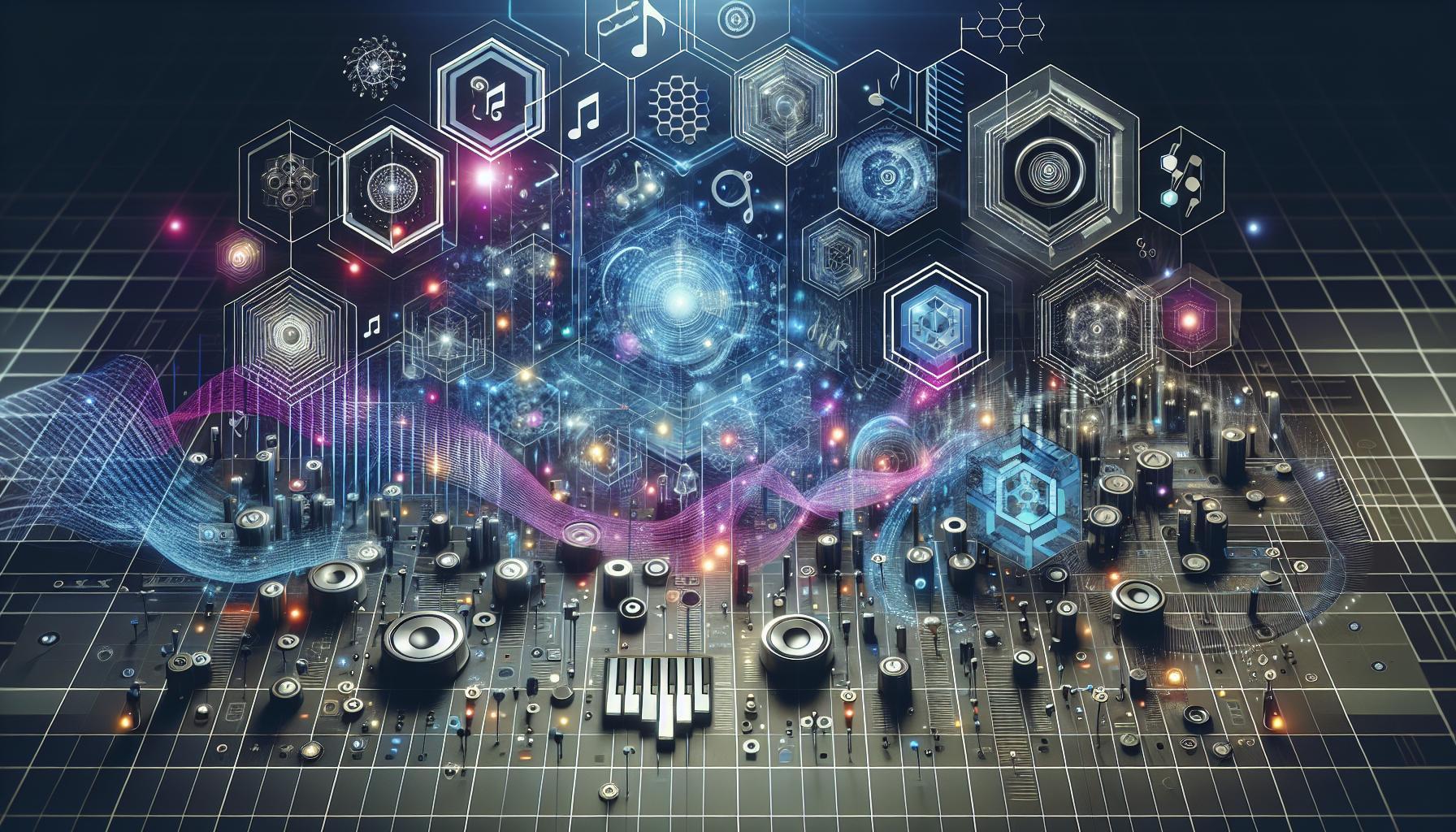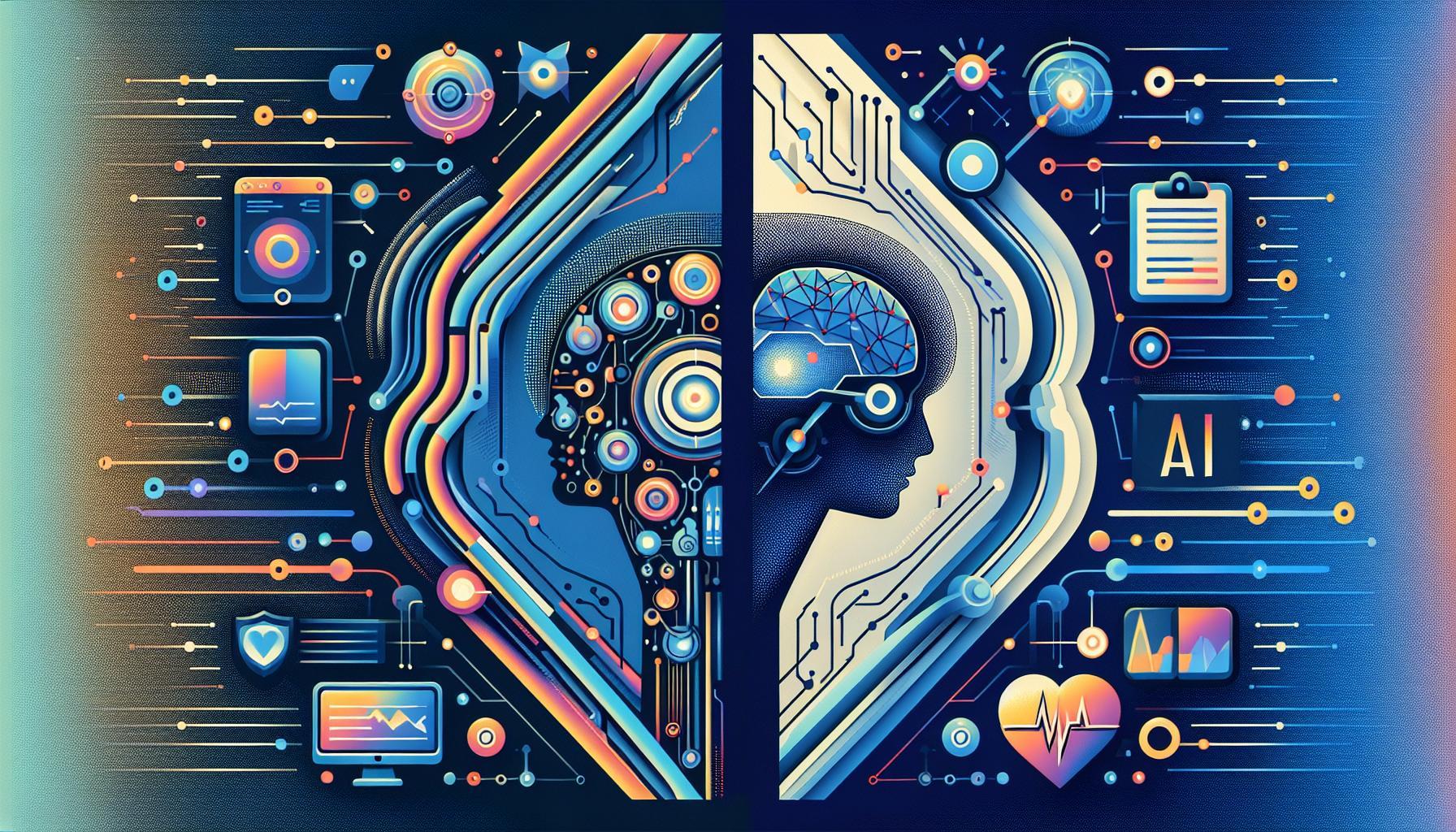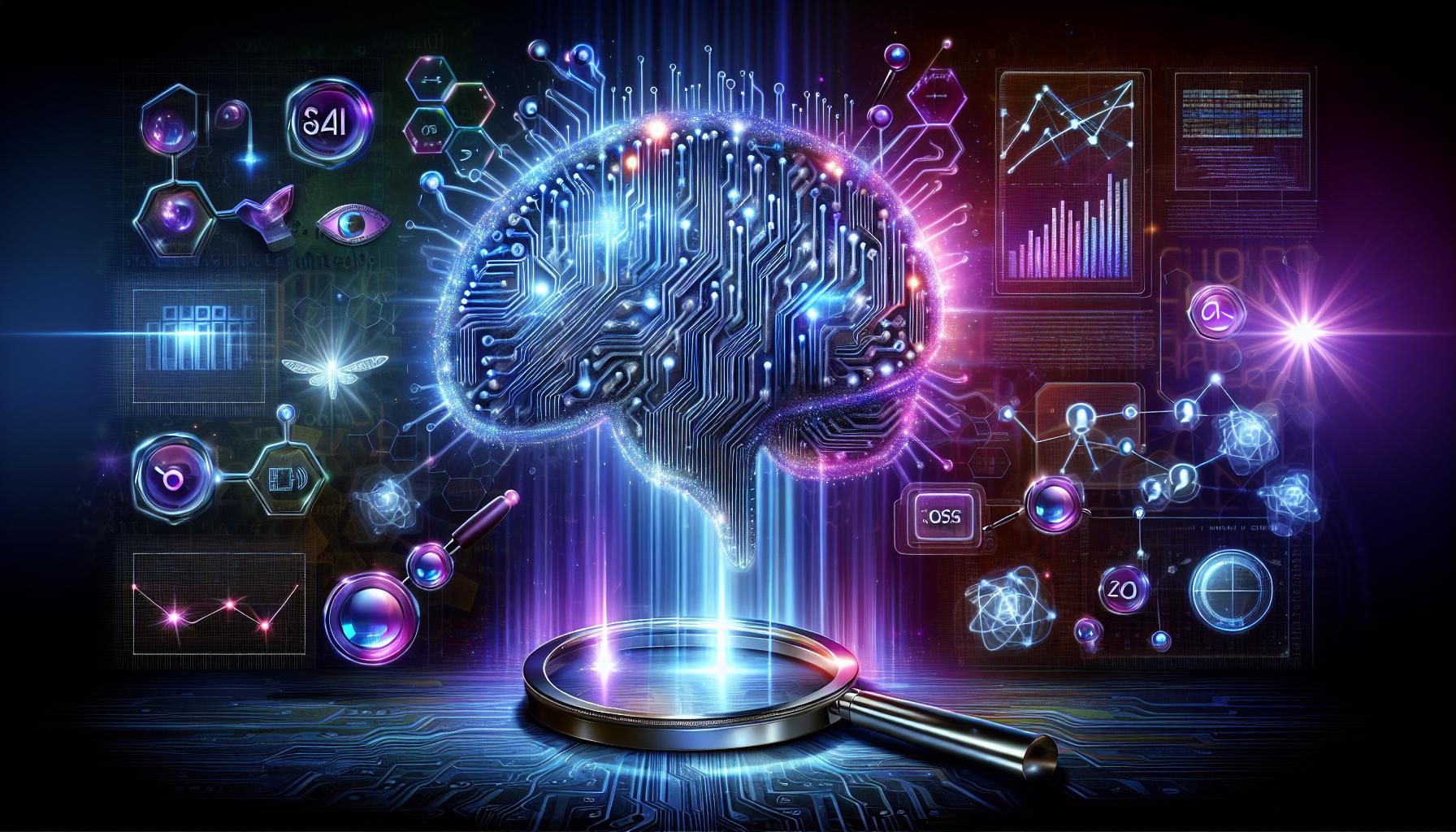As the music industry increasingly embraces artificial intelligence, a pressing question arises: can AI tools like Suno effectively generate lead sheets? This topic is crucial for musicians and composers eager to leverage technology for enhanced creativity and efficiency. Understanding how these innovative programs function can revolutionize music production and streamline the songwriting process, making it accessible to all.
Understanding Lead Sheets: A Quick Overview
In the realm of music composition, lead sheets serve as a fundamental tool for musicians, offering a streamlined way to convey both melody and harmonic structure. Typically comprising the melody line, lyrics, and chord symbols, lead sheets provide essential information necessary for performers to interpret and recreate a piece. This simplicity makes them invaluable for songwriters, educators, and performers alike, allowing for ease of communication and collaboration across diverse musical contexts.
Understanding how to create and utilize lead sheets effectively can significantly enhance the songwriting process. With the advent of AI music programs such as Suno, the landscape of music creation has evolved dramatically. These tools can assist composers by generating lead sheets quickly and efficiently, allowing musicians to focus more on their creative expression rather than the mechanics of notation. Here are some key aspects of lead sheets:
- Melody: The central component that guides the performance. It is typically notated on a single staff to ensure clarity.
- Chords: Annotated above the melody, these symbols indicate harmonic progression and inform the accompanying instruments.
- Lyrics: Lyrics are usually included beneath the melody to provide context and enhance expression.
The proficiency of AI in generating lead sheets raises intriguing questions regarding its role in music production. Research indicates that while AI programs can produce lead sheets that are structurally accurate, the creative nuances that come from human touch—such as emotional phrasing or stylistic variations—may still present limitations. Therefore, while the answer to “Can AI Music Programs Like Suno Create Lead Sheets?” leans toward an affirmative, it encourages composers to embrace these technologies as complementary tools rather than complete replacements for traditional methods.
To maximize the benefits of AI-generated lead sheets, musicians should consider integrating these resources into their existing creative workflow. For example, a songwriter might use Suno to draft an initial lead sheet and then refine it by adding personal touches or adjustments based on their artistic vision. Collaborating with AI can facilitate a more dynamic writing process, allowing musicians to explore a broader range of possibilities and enhance their creative output.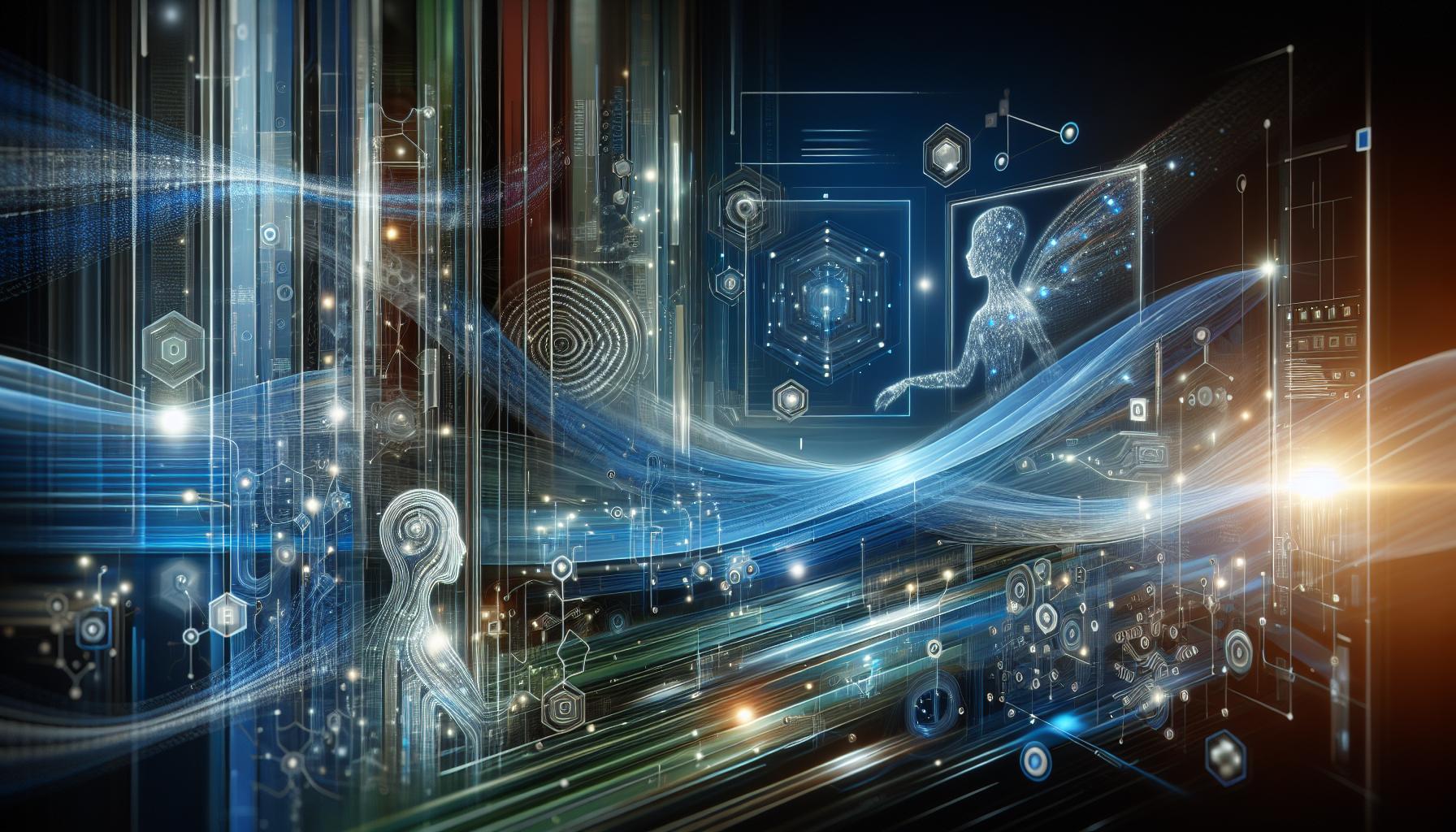
How AI Music Programs Work: The Technology Behind the Magic
In the realm of music creation, transformative advancements in artificial intelligence (AI) are reshaping how artists compose and produce music. Many musicians and producers are now exploring whether AI music programs, such as Suno, can efficiently generate lead sheets, which are essential tools for arranging and performing music. These programs leverage complex algorithms and machine learning to analyze existing musical works, enabling them to create original compositions based on user inputs and preferences.
Understanding the Technology Behind AI Music Programs
AI music programs utilize generative algorithms that engage in a learning process from vast datasets of existing music. By examining these datasets, the software identifies patterns, structures, and styles, allowing it to produce new and original lead sheets. This process includes natural language processing, enabling users to input descriptions or prompts that guide the AI in understanding the desired musical context.
Key Components of AI Music Creation:
- Data Analysis: The AI analyzes numerous music pieces to discern patterns and styles, which forms the basis for its creative outputs.
- Machine Learning Models: Advanced models are trained on diverse genres and instrumentation, providing flexibility and depth in music generation.
- User Interactivity: Users can interact with the AI, adjusting parameters to guide creativity, leading to personalized output that matches their unique style.
The Process of Generating Lead Sheets
When exploring the potential of AI music programs like Suno in generating lead sheets, the workflow typically begins with the user providing specific prompts. For example, a user might describe the mood, tempo, or instrumentation they envision. The AI then processes this input, referencing its learned data, and synthesizes a lead sheet that includes the necessary chord changes, melody lines, and arrangements suitable for performance.
To ensure that these led sheets are practical and usable, the technology integrates various music theory principles. This means that the output not only adheres to common musical frameworks but also allows for innovative variations that inspire creativity. As a result, musicians can spend less time on notation and more on the artistry of performance.
By harnessing these advanced technologies, musicians can unlock a world of creativity that blends human intuition with machine precision. As they pose the question, “Can AI music programs like Suno create lead sheets?”, it’s evident that the answer lies in the collaboration of human input and AI’s computational capabilities, heralding a new era of music production and composition.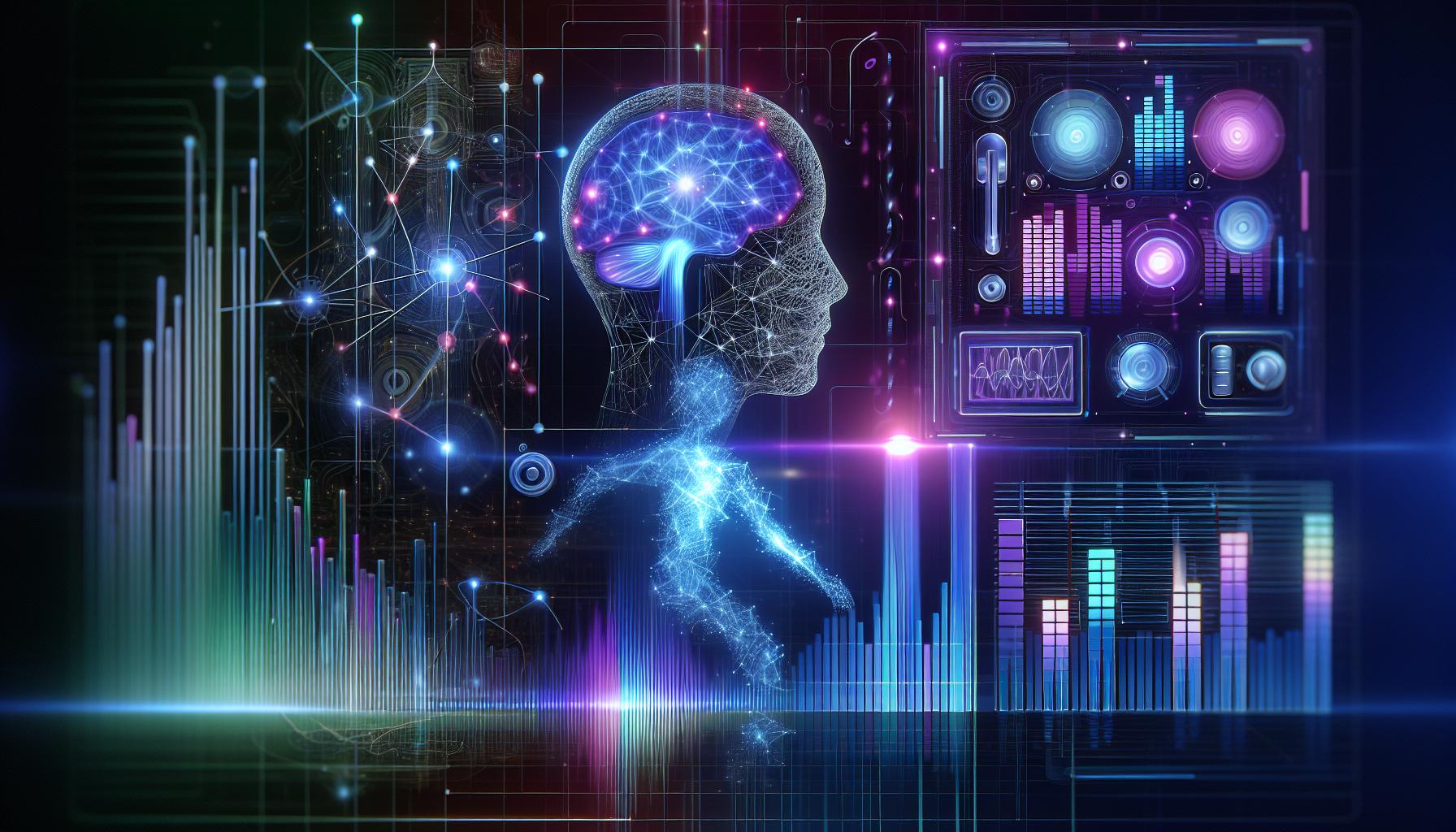
Suno and Its Unique Features: What Sets It Apart for Musicians
With the rise of artificial intelligence in music creation, platforms like Suno are proving to be game-changers for musicians and composers. By combining sophisticated algorithms with user-friendly features, Suno enables artists to generate unique melodies and full tracks effortlessly. One of the standout aspects of this platform is its ability to produce professional-quality music quickly, allowing musicians to focus on creativity rather than technicalities. This efficiency can be particularly beneficial for musicians seeking to create lead sheets or preliminary compositions.
Customizable Music Generation
Suno’s music generation capabilities are among its most appealing features. Users can create music in various genres—from pop and electronic to classical and jazz—by simply entering prompts related to their artistic vision. This flexible approach not only encourages experimentation but also empowers musicians who may not have extensive music theory knowledge to generate compositions that reflect their unique style. Moreover, the platform offers both Simple and Custom Modes, giving users the freedom to choose the level of complexity they desire in their compositions.
Commercial Use and Copyright-Free Music
Another key advantage of using Suno is that all music created on the platform is copyright-free, allowing musicians to use their generated tracks for commercial purposes without legal concerns. This feature is particularly attractive for independent artists and content creators who rely on original music for their projects. By using Suno, musicians can save time and money typically spent on hiring composers or purchasing licenses for music samples, enabling them to allocate resources toward other creative pursuits.
Collaboration and Ease of Use
Suno also fosters collaboration by allowing musicians to share their generated tracks with others easily, facilitating feedback and improvements. The platform’s intuitive interface is designed for users of all skill levels, making it accessible to beginners and seasoned professionals alike. This inclusiveness ensures that everyone from hobbyists to career musicians can benefit from the technology. In practice, musicians can quickly produce lead sheets that serve as a foundation for further composition or collaboration, enhancing their workflow and creative processes.
With its powerful features tailored to the needs of modern musicians, Suno is setting a new standard in AI music creation tools. As artists continue to explore the intersection of technology and creativity, platforms like Suno will undoubtedly play a pivotal role in shaping the future of music composition.
Creating Lead Sheets with AI: Step-by-Step Process
Creating lead sheets using AI tools can revolutionize the way musicians prepare for practice and performances, making the process quicker and more efficient. With the rise of AI music programs, such as Suno, musicians are now empowered to generate lead sheets in a fraction of the time it traditionally takes. Harnessing the capabilities of AI not only accelerates the transcription of songs but also enhances the accessibility of music creation for both seasoned professionals and aspiring musicians.
To start generating lead sheets with AI, follow a straightforward step-by-step process. Here’s how you can easily create your own lead sheets:
Step 1: Choose Your AI Tool
Select an AI music program that suits your needs. Options like YesChat’s Music Sheet Generator focus on transforming song links into formatted lead sheets, while tools like Melody Scanner and Songscription can transcribe audio files into sheet music. This enables musicians to select the most appropriate software based on their preferences and requirements.
Step 2: Input Your Song Data
Once you have your preferred tool, input the song link or upload the audio file. Most programs allow you to simply paste a URL from platforms like YouTube or upload recordings. This step is crucial as the AI analyzes the song for melody, harmony, and chord progressions, which will be essential for the final lead sheet.
Step 3: Review and Edit the Generated Sheet
After processing, the AI will provide you with a lead sheet that includes melody lines and chord symbols. It’s important to review this output. AI algorithms may not perfectly capture complex chord progressions or specific rhythmic nuances. Tools like Songscription offer varied export options, including MIDI and MusicXML files, enabling you to fine-tune the sheet music in your notation software.
Step 4: Utilize the Lead Sheet in Practice
With your final lead sheet in hand, you can now use it for practice, teaching, or performance. These lead sheets not only simplify learning but also allow for immediate accessibility to a wide array of songs, expanding your repertoire effortlessly. Incorporating these steps into your music routine will enhance both your performance and compositional skills.
By leveraging AI music programs like Suno, you can quickly create lead sheets that meet your artistic needs, making music creation more accessible than ever. The effectiveness of these tools opens doors for creativity and learning that were previously limited by time and resources.
The Role of Musical Theory in AI Compositions
Music theory serves as an essential foundation for both human composers and AI music programs, facilitating a deeper understanding of composition that enhances the creative capabilities of artificial intelligence. The intersection of music theory and AI opens up new avenues for generating complex musical structures, allowing programs like Suno to analyze, interpret, and create lead sheets effectively. By leveraging the rules and principles of music theory, these AI systems can produce compositions that not only emulate existing styles but also innovate upon them.
Understanding Musical Structures
AI music programs operate by recognizing patterns and structures derived from vast datasets. With a solid grasp of music theory, these algorithms can identify key signatures, chord progressions, and melodic lines that adhere to traditional compositional rules. This theoretical grounding empowers programs like Suno to create lead sheets that reflect a coherent musical language. For instance, an AI trained on classical compositions can generate lead sheets that highlight appropriate harmonic progressions, thereby maintaining the integrity of musical forms.
- Chords and Harmony: AI can analyze common chord progressions, enabling it to craft harmonically rich lead sheets.
- Melody Construction: Understanding scales and modes helps AI generate catchy and stylistically relevant melodies.
- Rhythmic Patterns: By learning various rhythmic styles, AI can incorporate compelling rhythmic elements into its compositions.
Evaluating AI’s Compositional Output
The true test of whether AI music programs like Suno can create effective lead sheets lies in their output’s musicality and adherence to theory. A practical approach for evaluation includes comparative analysis, where the generated lead sheets are assessed alongside traditionally composed pieces. This can be an insightful exercise for both musicians and music theorists, as it illuminates the strengths and limitations of AI in musical creation. Furthermore, collaboration between AI and human musicians can lead to unique compositions that blend algorithmic precision with human emotionality, enriching the musical landscape.
| Criteria | AI Generated Lead Sheets | Traditional Compositions |
|---|---|---|
| Harmonic Complexity | Variable but improving | Established norms |
| Melody Creativity | Innovative yet formulaic | Highly varied |
| Rhythmic Diversity | Emerging trends | Rich and diverse |
As the field of AI in music continues to evolve, the role of musical theory remains pivotal. Programs like Suno that incorporate theoretical insights will not only be able to create lead sheets but will also enhance their ability to engage with the nuances of musical expression. Whether AI will reach a point of composing music that resonates emotionally with audiences remains a topic of exploration, yet the potential for groundbreaking advancements is undeniable.
Limitations of AI in Music Creation: What You Should Know
Despite the remarkable advancements in artificial intelligence, the creation of music—particularly tasks such as generating lead sheets—is laden with challenges. While AI music programs, including Suno, exhibit impressive capabilities, they often fall short in producing compositions that resonate with the emotional and intricate nature of human creativity. AI systems primarily operate on algorithms and data patterns, which lack the qualitative nuances that define great music. Their reliance on existing patterns can result in outputs that may sound formulaic or uninspired when compared to works crafted by human composers.
The Technical Limitations
AI-generated music faces significant technical constraints that hinder its ability to fully emulate human composition. These include:
- Sampling Bias: AI models are trained on datasets that may not cover the breadth of musical genres or subtleties. Thus, they might replicate known styles without introducing innovative ideas.
- Lack of Emotion: AI cannot genuinely understand or convey emotions in music. Human artists often infuse their work with personal experiences and feelings, elements that AI algorithms struggle to replicate.
- Complex Structures: While AI can generate simple melodies and chord progressions, it may falter in creating complex arrangements that involve varying dynamics, transitions, and thematic developments.
Quality Control and Originality
The issue of quality is perhaps the most debated aspect of AI in music production. Many argue that AI-generated music lacks originality, as it draws heavily from existing works rather than producing truly innovative pieces. Although these tools can create music that is technically correct, they often miss out on the richness of storytelling and thematic depth that characterizes much of human-created music.
Furthermore, there’s a growing concern about the potential impact of AI on the future of human artistry. As tools like Suno are increasingly capable of producing music quickly and at scale, they may undermine traditional practices and the value of human craftsmanship. This tension raises important questions about what constitutes real creativity in music.
In summary, while AI music programs like Suno can assist in the music-making process and even generate functional lead sheets, their inherent limitations suggest they cannot replace the vibrancy and complexity of human musical expression. As the landscape of music evolves with technology, it is crucial for artists to find a balance, leveraging AI’s strengths while preserving the essence of their creative identities.
Real-World Applications: Success Stories in AI-Generated Music
With the rapid advancement of AI technology, the music industry is witnessing a transformative shift that not only enhances creativity but also streamlines production processes. Many artists and producers are turning to AI-powered programs to assist in the music creation process, including generating lead sheets—an essential element for musicians, especially in collaborative environments. This technology raises the question: can AI music programs like Suno truly generate effective lead sheets? The answer is increasingly affirmative, as demonstrated by a variety of real-world success stories where AI has significantly impacted music production.
Innovative Music Composition
One notable example is the use of AI to craft compelling musical pieces that can be easily transcribed into lead sheets. Platforms like AIVA have emerged as leaders in composing original music, allowing artists to input specific parameters such as genre, mood, and tempo. This capability not only produces unique compositions but also facilitates the generation of lead sheets which serve as a foundation for musicians to build upon. Artists using AIVA have successfully released entire albums born from AI collaboration, showcasing the potential of AI in creating music that resonates with audiences.
Streamlined Production Processes
AI technology doesn’t just stop at composition; it extends into the realm of production as well. Tools such as LANDR and iZotope Neutron employ artificial intelligence to analyze existing tracks and suggest improvements. The result is a refined sound that aligns with industry standards without the painstaking manual adjustments typically required. This speed and efficiency in the production process enable sound engineers and musicians to focus on creativity rather than logistics, ultimately making it easier to produce high-quality music pieces accompanied by well-structured lead sheets.
Enhancing Collaboration
Moreover, AI’s role in enhancing collaboration among artists cannot be overlooked. Programs like Suno allow musicians to share and build on each other’s work seamlessly, generating lead sheets that serve as a universal language among varied musical styles. For example, collaborative projects utilizing AI have resulted in cross-genre experiments that blend different musical elements, making lead sheets crucial for maintaining coherence in the final composition. This adaptability illustrates how AI tools can empower musicians to explore new creative territories while ensuring that their ideas are well-documented and easy to communicate.
Through these real-world applications, it is evident that AI music programs like Suno are not just viable; they are revolutionizing the music industry by making the process of composing, producing, and collaborating more efficient and innovative. As artists continue to explore these tools, the question of whether AI can create lead sheets transforms into a celebration of new possibilities, showcasing the symbiotic relationship between technology and creativity in music today.
Future Possibilities: The Next Frontier for AI in Music Production
The integration of artificial intelligence in music production is accelerating at an astonishing rate, offering unprecedented opportunities for creativity and efficiency. As music programs like Suno increasingly explore their capabilities, one significant aspect to consider is the creation of lead sheets. These essential tools for musicians not only outline melodies and harmonies but also provide a standardized format for sharing compositions. The future of AI in this realm points towards even more sophisticated functionalities that can assist musicians and composers in new and engaging ways.
By leveraging advanced machine learning algorithms, AI tools are becoming adept at understanding musical structures, styles, and nuances. For example, AI-driven programs can analyze vast arrays of music data—from classical symphonies to contemporary pop hits—to generate lead sheets that accurately reflect the desired sound. This process includes identifying key signatures, chord progressions, and melodic lines that suit a specific genre or emotional tone. As these AI models grow more sophisticated, they will enable musicians to produce lead sheets almost instantaneously, dramatically reducing the time spent on manual notation and arrangement.
Enhancing Creativity and Collaboration
Imagine a scenario where a songwriter can simply input their musical ideas or themes into an AI program like Suno, which then composes a lead sheet within minutes. This would not only enhance individual creativity but also create a collaborative space where different musicians can remix or adapt these lead sheets. In this way, AI can act as both a creative partner and an automation tool, streamlining the composition process. Furthermore, as AI systems become better at understanding the emotional nuances of music, they could suggest lyrical content or chord variations that resonate with listeners’ preferences.
Moreover, the future of AI in music production extends beyond just lead sheets. As tools evolve, they could offer features such as real-time collaboration across geographical boundaries, allowing musicians to work together seamlessly. AI could also facilitate the integration of different instrumentations, effectively generating full arrangements from basic lead sheets, thereby supporting composers who wish to explore new musical landscapes without extensive knowledge of orchestration or arranging.
While the question, “Can AI music programs like Suno create lead sheets?” opens a fascinating discussion, the answer lies in the evolving functionalities and potential of these AI tools. As they progress, expect to see not only efficiency in producing lead sheets but also deeper insights into music creation that unlock new levels of creative expression for artists everywhere. With the right balance of human intuition and AI capabilities, the future of music production promises to be a rich tapestry of innovation and collaboration.
Frequently asked questions
Can AI Music Programs Like Suno Create Lead Sheets?
Yes, AI music programs like Suno can assist in creating lead sheets by generating melodies and chord progressions based on user inputs. However, they may have limitations in providing complete and polished lead sheets.
These AI tools utilize algorithms to analyze existing music and compose original melodies and harmonies. Using such programs streamlines the songwriting process, allowing musicians to focus on their creativity while the AI handles technical music aspects. For more details on improving your music productivity with AI, check out our extensive guides.
What is a lead sheet and how is it used?
A lead sheet is a form of musical notation that outlines the essential elements of a song: the melody, lyrics, and chord symbols. It serves as a roadmap for musicians.
Musicians use lead sheets for various purposes, such as performing, arranging, or composing new music. This simplified notation allows flexibility for interpretation, making it popular in jazz and pop music. Understanding lead sheets can enhance your creativity and improvisation.
How can I generate lead sheets using AI tools?
You can generate lead sheets using AI tools by inputting melodies or chord progressions, after which the software will create a formatted lead sheet for you.
AI music programs analyze the input data and produce sheet music with melody notations and chord symbols. Programs like Remusic’s AI Music Generator help you quickly create these elements, streamlining your compositional workflow.
Can AI-generated lead sheets be edited?
Yes, AI-generated lead sheets can typically be exported into different formats, allowing you to edit them in notation software.
Most AI music programs support MIDI, MusicXML, and PDF formats, making it easy to refine the output in your preferred digital audio workstation (DAW) or notation editor. This flexibility allows for personalized adjustments to better fit your artistic vision.
Are AI-generated lead sheets accurate?
AI-generated lead sheets can be accurate but may vary based on the complexity of the original music and the AI’s algorithms.
While many AI tools are constantly being refined for better accuracy, it’s advisable to review and make any necessary adjustments to ensure the output meets your quality standards. Engaging with the AI enhances your learning and improves overall results.
What challenges do AI music programs face when creating lead sheets?
AI music programs face challenges in fully capturing *nuances* of music, such as *expressive dynamics* and *stylistic choices*, when creating lead sheets.
These subtleties often require a human touch. While AI can provide a foundation, it’s crucial to refine the end product to incorporate your personal style and *artistic expression*. Thus, understanding both AI capabilities and your music preferences is key.
Can I use AI music programs for different genres?
Yes, AI music programs can be used across various genres to create lead sheets, adapting their functionality to different styles of music.
This versatility allows musicians from jazz to pop to explore and innovate using AI-generated music. Tools like Remusic are designed to cater to a range of musical styles, helping you create lead sheets appropriate for any genre.
Insights and Conclusions
In conclusion, AI music programs, including Suno and various other AI sheet music generators, are revolutionizing the way musicians create lead sheets. These tools not only simplify the transcription process but also enhance creativity by offering features like melody continuation and style conversion. By leveraging advanced algorithms, AI can transform audio files into organized sheet music that is accessible to musicians of all levels. This technology empowers users to break through creative barriers and streamline their practice and performance. As AI continues to evolve, exploring these innovative solutions will undoubtedly enhance your musical journey. Dive deeper into the realm of AI-generated music and experience its potential firsthand!

